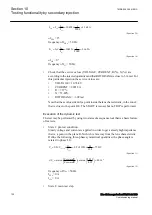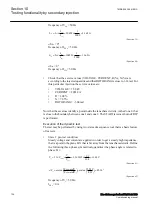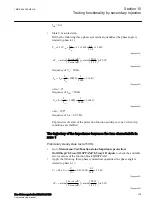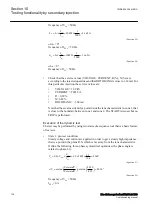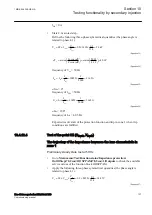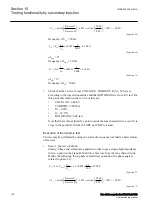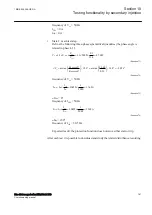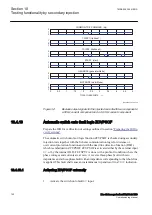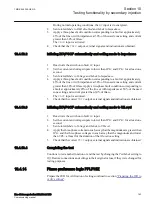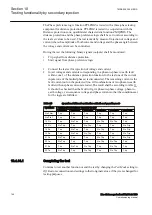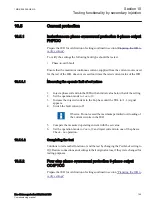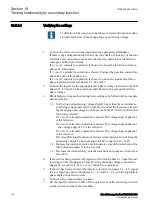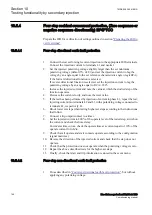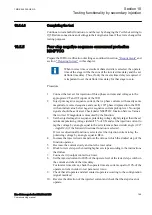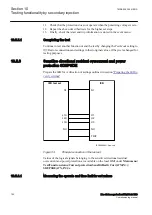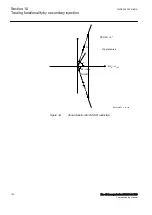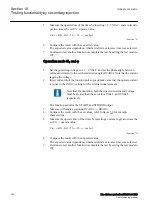
10.5.2.1
Verifying the settings
Verification of the non-directional phase overcurrent function is done
as instructed below, without applying any polarizing voltage.
1.
Connect the test set for current injection to the appropriate IED phases.
If there is any configuration logic that is used to enable or block any of the four
available overcurrent steps, make sure that the step under test is enabled (for
example, end fault protection).
If
1 out of 3
currents for operation is chosen: Connect the injection current to
phases L1 and neutral.
If
2 out of 3
currents for operation is chosen: Connect the injection current into
phase L1 and out from phase L2.
If
3 out of 3
currents for operation is chosen: Connect the symmetrical three-
phase injection current into phases L1, L2 and L3.
2.
Connect the test set for the appropriate three-phase voltage injection to the IED
phases L1, L2 and L3. The protection shall be fed with a symmetrical three-
phase voltage.
3.
Block higher set stages when testing lower set stages by following the procedure
described below:
3.1. Set the injected polarizing voltage slightly larger than the set minimum
polarizing voltage (default is 5% of
UBase
) and set the injection current to
lag the appropriate voltage by an angle of about 80° if forward directional
function is selected.
If
1 out of 3
currents for operation is chosen: The voltage angle of phase L1
is the reference.
If
2 out of 3
currents for operation is chosen: The voltage angle of phase L1
– the voltage angle of L2 is the reference.
If
3 out of 3
currents for operation is chosen: The voltage angle of phase L1
is the reference.
If reverse directional function is selected, set the injection current to lag the
polarizing voltage by an angle equal to 260° (equal to 80° + 180°).
3.2. Increase the injected current, note the operate value of the tested step of the
function and compare it to the set value.
3.3. Decrease the current slowly, note the reset value and compare it to the reset
ratio 95%.
4.
If the test has been performed by injection of current in phase L1, repeat the test,
injecting current into phases L2 and L3 with polarizing voltage connected to
phases L2, respectively L3 (
1 out of 3
currents for operation).
5.
If the test has been performed by injection of current in phases L1 – L2, repeat
the test, injecting current into phases L2 – L3 and L3 – L1 with the appropriate
phase angle of injected currents.
6.
Connect a trip output contact to a timer.
7.
Set the injected current to 200% of the operate level of the tested stage, switch
on the current and check the time delay.
Section 10
1MRK 506 355-UEN A
Testing functionality by secondary injection
146
Line distance protection REL670 2.1 IEC
Commissioning manual
Summary of Contents for Relion 670 Series REL670
Page 1: ...Relion 670 series Line distance protection REL670 2 1 IEC Commissioning manual ...
Page 2: ......
Page 30: ...24 ...
Page 34: ...28 ...
Page 64: ...58 ...
Page 68: ...62 ...
Page 90: ...84 ...
Page 254: ...248 ...
Page 260: ...254 ...
Page 269: ...263 ...

